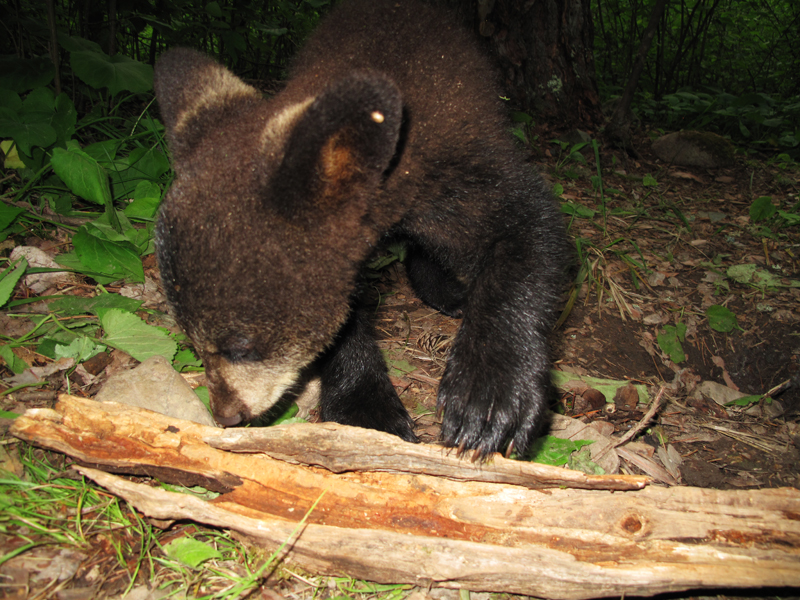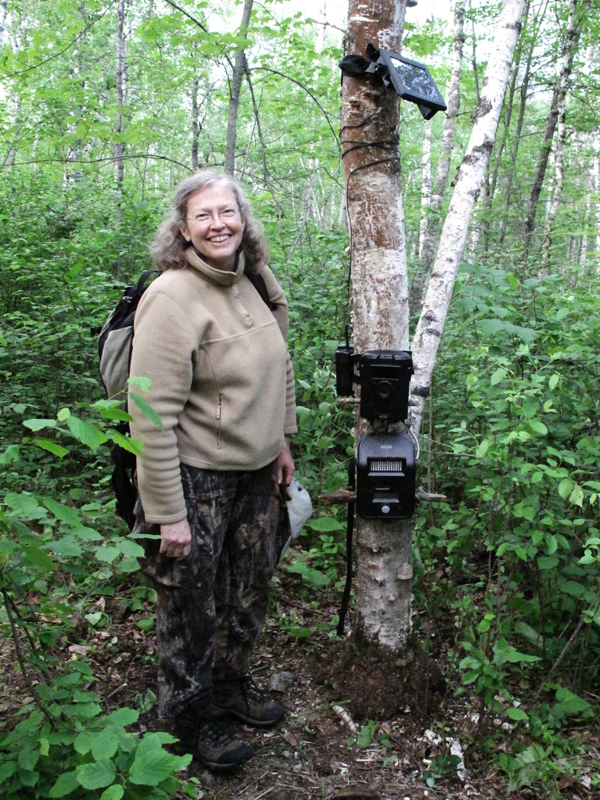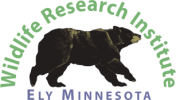Hope continues to forage
Hope continues to forage
June 14, 2010 – 9:42 PM CDT
 We don’t think Hope could be doing better under the circumstances. She is eating the formula, grapes, nuts, and mealworms we put out for her twice a day. In a taste test this evening, she went first for the mealworms, left those and ate all the grapes (2 cups), tried some formula, ate a cup of nuts, and seemed to be full. She pawed at a piece of wood, lay by the base of her red pine and pawed at the bark, and left. On the way out, we saw a log she had been working at for ants or grubs and found her dropping next to it. The scat contained ants, other insects, a fly, unripe Juneberry seeds, a raspberry flower, and other vegetation. It also contained a tiny, transparent clam shell. Hope is exploring and learning wild ways.
We don’t think Hope could be doing better under the circumstances. She is eating the formula, grapes, nuts, and mealworms we put out for her twice a day. In a taste test this evening, she went first for the mealworms, left those and ate all the grapes (2 cups), tried some formula, ate a cup of nuts, and seemed to be full. She pawed at a piece of wood, lay by the base of her red pine and pawed at the bark, and left. On the way out, we saw a log she had been working at for ants or grubs and found her dropping next to it. The scat contained ants, other insects, a fly, unripe Juneberry seeds, a raspberry flower, and other vegetation. It also contained a tiny, transparent clam shell. Hope is exploring and learning wild ways.
Deer flies are out now. They bite hard. When one buzzed around Hope, she batted at it as it flew and swatted at it whenever it landed on her ears or face. Other bears do this, too. They know the buzz and the bite of deer flies and horse flies. It’s a case of eat or be eaten. If they do catch one, they eat it.
Strangely, mosquitoes and black flies are almost nonexistent this year—probably because April had no snowfall and only a trace of rain.
The picture shows the brown patches on the backs of her ears. She is starting to lose them, which is a sign she is beginning to shed her short (about an inch) soft cub fur. She will replace it with longer adult fur.
 We saw a question about the radio-collar. We had said earlier that we had a lightweight radio-collar for her. However, in testing it, the range was too short and the frequency differed enough from our specialized antennas that it was hard to determine the direction. So we ordered a collar in our usual frequency range that should arrive in about 2 weeks. We want it to arrive before she gets so heavily into wild berries that her visits to her feeding site might be less regular. It will all work out, though.
We saw a question about the radio-collar. We had said earlier that we had a lightweight radio-collar for her. However, in testing it, the range was too short and the frequency differed enough from our specialized antennas that it was hard to determine the direction. So we ordered a collar in our usual frequency range that should arrive in about 2 weeks. We want it to arrive before she gets so heavily into wild berries that her visits to her feeding site might be less regular. It will all work out, though.
The other picture shows Sue by the two trail cameras. One is a reliable flash camera donated by a Lily and Hope fan. The other is a new one that sends pictures to a web site so we can check her visits through the day. The black object partway up the tree is the solar panel that augments the batteries. So far this camera has not produced a picture, so we are fine-tuning the aim, etc.
Lily is only a half mile northwest. It seems surprising that Lily has not visited Hope’s area after all the time she spent there this spring. Could she know Hope is there? Could she be avoiding it like mothers often avoid the areas where their yearlings settle after family breakup, giving them an exclusive feeding area?
Thank you for your contributions. You are making a difference.
—Lynn Rogers and Sue Mansfield, Biologists, North American Bear Center
